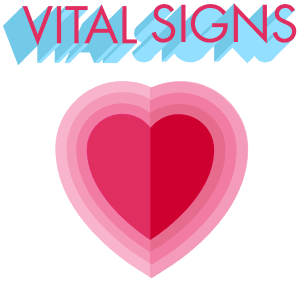

Periods can be difficult to deal with. They can be painful, messy, and people can find it hard to talk about them. They can also start at the most inconvenient of times–sometimes at work.
Enter Tampon Club. The idea is easy and totally open; it’s designed to be replicated all over the world. Set one up yourself: Buy some sanitary products, put them in your workplace bathrooms, and then invite other women to use them.
Alice Bartlett, a front-end developer at the U.K.’s Government Digital Service, deserves credit for the idea. The inspiration came from her mother, who had worked for IBM. The IBM campus was, at the time, a cash-free environment. “Everyone paid for everything on their building passes, but there were tampon machines which you couldn’t use because you [didn’t] have cash,” she said. Bartlett explained that her mother’s male bosses seemed uncomfortable talking about the issue and wouldn’t deal with it.
Bartlett decided to take a more direct approach. She didn’t wait to ask for permission; she just put some tampons in a cupboard near the office bathroom with a sign saying, “Do not eat me, I am not sweets.”
This worked in a small company but not when she moved to the larger Government Digital Service. The more corporate-style bathrooms had nowhere to hide tampons. She also faced a long walk between her desk and the toilets. As someone who rarely wore clothes with large pockets, she would have to walk past many other employees clasping the tampons in her hand.
So she changed her tactic and decided to get even more direct. She bought a simple plastic container, filled it with tampons and sanitary towels, and left it in plain view near a sign labeled with her employer’s key design principles. “This is for everyone,” it read.

The idea was to make the sanitary products look unapologetically like they deserved to be there. After a blog post describing what she’d done proved popular, Bartlett decided to formalize the idea by building a website and Twitter account, complete with a cheery logo designed by a friend.
“I exist in a very privileged position,” Bartlett said. “I can do this at my workplace. No one’s going to think I’m a troublemaker. The worst thing that can happen is that people will politely ignore me, which is fine. But I can think of workplaces where I’d feel much more nervous about doing this.”
Having this more formal site–a “proper-looking thing you can hide behind,” as she described it–offers “a way for women to deflect attention from themselves and offer Tampon Club up as an existing, legitimate service.”
Tampon Club also provides a way to breach the knowledge gap between well-intentioned management that want to offer sanitary products but simply don’t know what to do. Even NASA faced this problem, infamously asking astronaut Sally Ride whether 100 tampons would be sufficient for a seven-day space flight. (“That,” she dryly informed them, “would not be the right number.”)
Bartlett’s “secret ambition” is for all businesses to provide free tampons. As she acknowledged, she’s not (yet) in a position to demand government ministers give out free sanitary protection. Until then, Tampon Club is a way of, at least, starting a conversation with employers and organizations, shaking off the stigma around periods to make sanitary products more accessible.


How We Get To Next was a magazine that explored the future of science, technology, and culture from 2014 to 2019. This article is part of our Vital Signs section, on the future of human health. Click the logo to read more.
